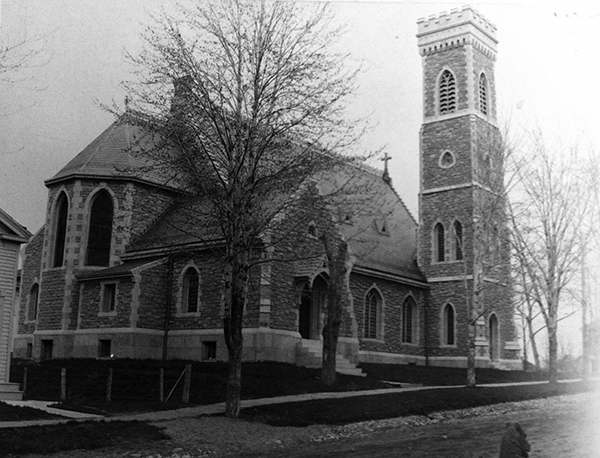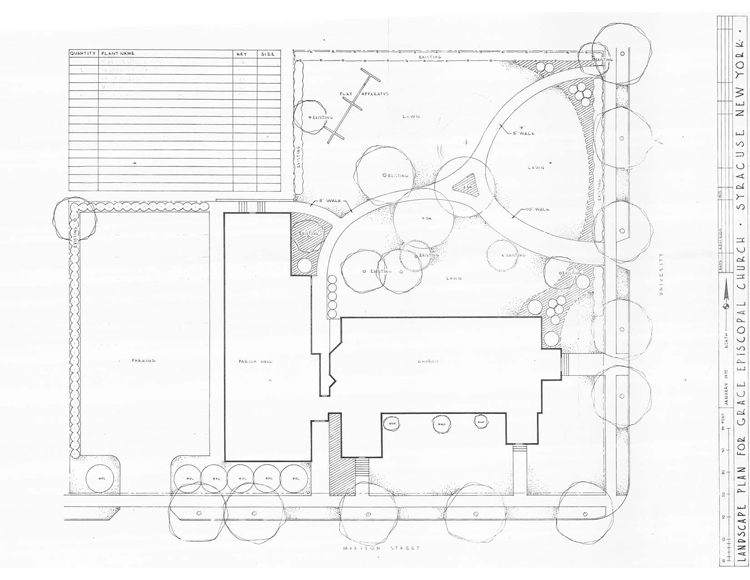Original Church Building
Upon Grace Church’s founding in 1870 as a mission parish, a small frame church was erected on the current church property at the corner of Madison Street and University Avenue within the growing east side of the city. A few blocks north was the newly founded Syracuse University and one block south of was the newly founded University Methodist Church. No plans or images of Grace’s first building have been found. On March 27, 1871, Grace Church was organized as the diocese’s fourth parish. Within five years, the parish had grown to the extent that a new building was warranted.
New Church Building
In 1876, the Diocese received a substantial gift from the Schermerhorn family of New York City for the new Grace Church building. The architect, Horatio Nelson White (1814-1892), was one of the most prominent in the region whose designs included the Syracuse University Hall of Languages (1871-73) at the head of University Avenue. The cornerstone for the new Victorian Gothic Revival-style building was laid in 1876, and it was completed the following year. The building underwent a number of interior renovations over the years, but only two major exterior alterations: a addition of a connecting wing to the new parish in 1916; and removal of the upper two stages of the tower due to structural issues in 1940. Noted local architect Melvin King designed the parapet on the lowered tower. It was probably at this time that the original polychrome slate roof over the nave was replaced with monochrome gray slate.

Addition of the Parish House
The parish house was added in 1916-1917 on the lot to the west occupied by a frame house, to provide a large auditorium, parlor, kitchen, offices, and classrooms, with recreation space in the basement that included a bowling alley. The building was designed by Justus M. Scrafford (1878-1947), a Beaux-Arts trained professor of architecture at Syracuse University. Scrafford’s design reflected the Gothic style of the church, complete with a crenelated parapet that evoked the one on the church tower. His design also showed influence of the Arts and Crafts Movement in the pebble-dash stucco and interior woodwork.

Urban Renewal and Expansion of the Church Property
The Welsh Garden is a place of quiet contemplation that contains the remains of Grace parishioners. It consists of two former residential lots to the north of the church that were acquired in the 1960s after the houses were removed as part of the city’s widespread urban renewal efforts. Another residential lot west of the parish house was acquired for parking. The garden is named in memory of Grace’s longest-serving Rector, Walter Welsh and his wife Marie, whose remains are interred at the cross at the center of the garden.


